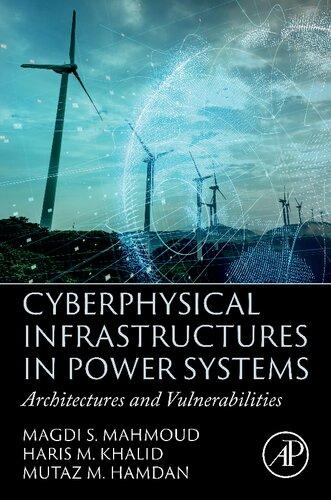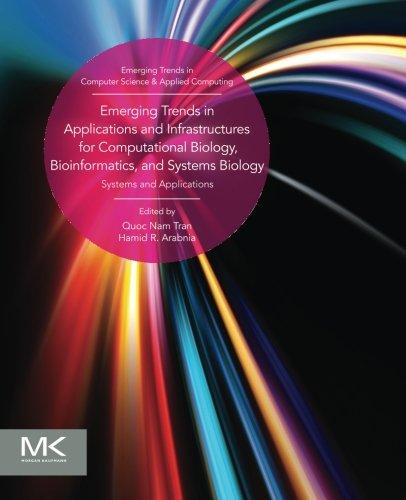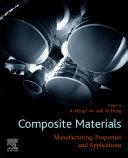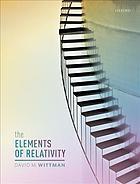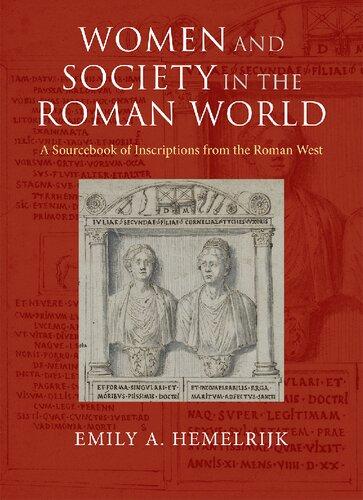CYBERPHYSICAL INFRASTRUCTURESINPOWER SYSTEMS
ArchitecturesandVulnerabilities
MAGDIS.MAHMOUD
KingFahdUniversityofPetroleumandMinerals SystemsEngineeringDepartment Dhahran,SaudiArabia
HARISM.KHALID
HigherCollegesofTechnology DepartmentofElectricalandElectronicsEngineering Sharjah,UnitedArabEmirates
MUTAZM.HAMDAN
KingFahdUniversityofPetroleumandMinerals SystemsEngineeringDepartment Dhahran,SaudiArabia
AcademicPressisanimprintofElsevier 125LondonWall,LondonEC2Y5AS,UnitedKingdom 525BStreet,Suite1650,SanDiego,CA92101,UnitedStates 50HampshireStreet,5thFloor,Cambridge,MA02139,UnitedStates TheBoulevard,LangfordLane,Kidlington,OxfordOX51GB,UnitedKingdom
Copyright©2022ElsevierInc.Allrightsreserved.
MATLAB® isatrademarkofTheMathWorks,Inc.andisusedwithpermission. TheMathWorksdoesnotwarranttheaccuracyofthetextorexercisesinthisbook. Thisbook’suseordiscussionofMATLAB® softwareorrelatedproductsdoesnotconstitute endorsementorsponsorshipbyTheMathWorksofaparticularpedagogicalapproachorparticular useoftheMATLAB® software.
Nopartofthispublicationmaybereproducedortransmittedinanyformorbyanymeans, electronicormechanical,includingphotocopying,recording,oranyinformationstorageand retrievalsystem,withoutpermissioninwritingfromthepublisher.Detailsonhowtoseek permission,furtherinformationaboutthePublisher’spermissionspoliciesandourarrangements withorganizationssuchastheCopyrightClearanceCenterandtheCopyrightLicensingAgency, canbefoundatourwebsite: www.elsevier.com/permissions
Thisbookandtheindividualcontributionscontainedinitareprotectedundercopyrightbythe Publisher(otherthanasmaybenotedherein).
Notices
Knowledgeandbestpracticeinthisfieldareconstantlychanging.Asnewresearchandexperience broadenourunderstanding,changesinresearchmethods,professionalpractices,ormedical treatmentmaybecomenecessary.
Practitionersandresearchersmustalwaysrelyontheirownexperienceandknowledgein evaluatingandusinganyinformation,methods,compounds,orexperimentsdescribedherein.In usingsuchinformationormethodstheyshouldbemindfuloftheirownsafetyandthesafetyof others,includingpartiesforwhomtheyhaveaprofessionalresponsibility.
Tothefullestextentofthelaw,neitherthePublishernortheauthors,contributors,oreditors, assumeanyliabilityforanyinjuryand/ordamagetopersonsorpropertyasamatterofproducts liability,negligenceorotherwise,orfromanyuseoroperationofanymethods,products, instructions,orideascontainedinthematerialherein.
LibraryofCongressCataloging-in-PublicationData
AcatalogrecordforthisbookisavailablefromtheLibraryofCongress
BritishLibraryCataloguing-in-PublicationData
AcataloguerecordforthisbookisavailablefromtheBritishLibrary
ISBN:978-0-323-85261-6
ForinformationonallAcademicPresspublications visitourwebsiteat https://www.elsevier.com/books-and-journals
Publisher: MaraConner
AcquisitionsEditor: SonniniR.Yura
EditorialProjectManager: ChiaraGiglio
ProductionProjectManager: NirmalaArumugam
Designer: MatthewLimbert
TypesetbyVTeX
Thisbookisdedicatedtoourfamiliesforthelove,unwaveringsupport,and allthejoytheybring.Withtolerance,patience,andtheirwonderfulframesof mind,theyhaveencouragedandsupportedusformanyyears.
MagdiS.Mahmoud,HarisM.Khalid,MutazM.Hamdan
This page intentionally left blank
Abouttheauthorsxiii
Preface xvii
Acknowledgmentsxxiii
Part1.Background
1.Overview3
1.1. Cyberphysicalsecuritymodelingsystems(CPS)4
1.1.1. Introduction4
1.1.2. Wide-areamonitoring,protectionandcontrolsystems5
1.1.3. Wide-areaprotection5
1.1.4. Phasormeasurementunits6
1.2. Cyberattacktaxonomy6
1.2.1. Cyberattackclassification8
1.2.2. CoordinatedattacksonWAMPAC8
1.2.3. Cyberphysicalsecurityusinggame-theoreticapproach9
1.2.4. Cyberlayerriskassessment11
1.2.5. Attackmodeling12
1.2.6. Gameformulationandsolutionstrategies13
1.3. Challengesincyberphysicalpowersystems14
1.3.1. Signalsampling14
1.3.2. Signalquantization15
1.3.3. Communicationdelay18
1.3.4. Packetdropouts21
1.3.5. Mediumaccessconstraints27
1.3.6. Channelfading28
1.3.7. Powerconstraints29
1.4. Secureindustrialcontrolsystems35
1.4.1. Introduction35
1.4.2. ProgressofSICS36
1.4.3. Majorsecurityobjectives37
1.5. Game-theoreticmethods39
1.5.1. Robustnessissue39
1.5.2. Resilientcontroldesign40
1.5.3. Hierarchicalsystems42
1.5.4. Physicallayercontrolsystemproblem43
1.6. Notes45 References46 vii
2.Smartgrids:controlandcybersecurity53
2.1. Aviewofnetworkedmicrogrids54
2.1.1. Introduction54
2.1.2. Typesofnetworkedmicrogrids54
2.1.3. Star-connectedNMG55
2.1.4. Ring-connectedNMG56
2.1.5. Mesh-connectedNMG56
2.1.6. ControlapproachesinNMGs57
2.2. Cyberattackprotectionandcontrolofmicrogrids60
2.2.1. Modelofmicrogridsystem63
2.2.2. Observationmodelandcyberattack64
2.2.3. Cyberattackminimizationinsmartgrids66
2.2.4. Stabilizingfeedbackcontroller67
2.2.5. SimulationresultsI68
2.3. Smartgridcybersecurityanalysis71
2.3.1. Introduction74
2.3.2. Powernetworkmodelandstateestimation75
2.3.3. Attackconstructionproblem79
2.3.4. Mainresult80
2.4. Mainattributes84
2.4.1. Rationaleofthenoinjectionassumption85
2.4.2. Relationshipwithminimumcutbasedresults85
2.4.3. Relationshipwithcompressedsensingresults86
2.4.4. Definitions88
2.4.5. Theequivalencebetweentworelations89
2.4.6. Proofofproposition90
2.4.7. SimulationresultsII91
2.5. Two-areapowersystem93
2.5.1. Introduction95
2.5.2. SimulationresultsIII96
2.6. Notes97 References98
Part2.Control,estimation,andfaultdetection
3.Safecontrolmethods105
3.1. Introduction105
3.2. Statefeedbackcontroller109
3.2.1. Threatmodel111
3.2.2. Designofthestatefeedbackcontroller112
3.3. Observer-basedcontroller116
3.3.1. Designofastatefeedbackcontroller119
3.3.2. Simulationresults122
3.4. Performance-degradationissues125
3.4.1. Preliminaries128
3.4.2. Systemdescription130
3.4.3. X 2 failuredetector131
3.4.4. Threatmodel132
3.4.5. Recursiveversionof Rk 136
3.4.6. Ellipsoidalapproximationof Rk 138
3.4.7. Simulationresults144
3.5. Decentralizedsecurecontrol145
3.5.1. Problemstatement146
3.5.2. Designresults150
3.5.3. Applicationtoafour-areapowersystem154
3.6. Notes157 References159
4.Event-triggeringcontrolofcyberphysicalpowersystems163
4.1. Introduction163
4.2. Problemformulationandthecontrolscheme167
4.2.1. Theeventtriggeringmechanism167
4.2.2. Theattackmodel168
4.2.3. Theobserver-basedcontrolscheme169
4.3. Designresults173
4.4. Illustrativeexamples178
4.4.1. Two-areapowersystems178
4.4.2. Asinglemachineconnectedtoaninfinite-bus179
4.5. Conclusions184 Appendix:proofof Theorem 14 185 References191
5.Wide-areamonitoringandestimationsystems195
5.1. Introduction195
5.2. WAMSapplicationsandstateestimation196
5.2.1. Threepossiblestates197
5.2.2. Basicparadigmsofstateestimation198
5.2.3. Staterepresentationofapowergrid200
5.2.4. Propertiesofprobabilityvector200
5.2.5. Observationmodel202
5.2.6. Correlationofnoise202
5.2.7. Functionoffrequencyoscillationstate203
5.2.8. Attackvector203
5.3. Medianregressionfunction-basedapproach204
5.3.1. Initialregressionanalysisusingthemappingfunction204
5.3.2. Additionalgeometricproperties205
5.3.3. Frequencyoscillationstateestimation206
5.3.4. Interactingmultiplemodel(IMM)-basedfusion207
5.3.5. Residualgenerationusingerrormatrix208
5.3.6. Residualevaluationusingcross-spectraldensityfunction208
5.4. Implementationandevaluationresults209
5.4.1. Systemdisturbances210
5.4.2. Deliberatedata-injectionscenarios212
5.4.3. Aimofahacker212
5.4.4. Performanceevaluationusingregressionmethods213
5.4.5. Estimationcomparisonwithtrackfusion220
5.4.6. MSE-basedestimationcomparison223
5.5. Notes226 References228
Part3.Powersystems’architectures
6.Futuregridarchitectures233
6.1. Communicationarchitecturesinsmartgrids233
6.1.1. Introduction235
6.1.2. Aframeworkofthenext-generationpowergrid236
6.1.3. Networkarchitecture237
6.1.4. Wide-areanetworks238
6.1.5. Field-areanetworks239
6.1.6. Home-areanetworks240
6.1.7. Delaypattern241
6.2. Wide-areamonitoringcontrolofsmartgrids243
6.2.1. Powersystemdynamicmodel243
6.2.2. Sensorsandactuators245
6.2.3. Controldesign245
6.2.4. Simulationresults248
6.3. Wide-areacasestudies251
6.3.1. Monitoringsystemcasestudy251
6.3.2. Monitoringandcontrolsystemscasestudy260
6.4. Notes267 References267
7.Matureindustrialfunctions271
7.1. Secureremotestateestimation271
7.1.1. Introduction271
7.1.2. Problemformulation273
7.1.3. Securemodulesfordatatransmission276
7.1.4. Detectionandperformanceanalysisinvariousattackscenarios280
7.1.5. Extensiontodetectotherattacks288
7.1.6. Proofsofthelemmasandtheorems290
7.1.7. Simulationresults296
7.2. Notes301 References301
8.Securefilteringinpowersystems305
8.1. Introduction305
8.2. Problemdescription307
8.3. Mainresults311
8.4. Simulationresults318
8.5. Notes322 References322
9.Basicmathematicaltools327
9.1. Finite-dimensionalspaces328
9.1.1. Vectorspaces328
9.1.2. Normsofvectors330
9.1.3. Somebasictopology331
9.1.4. Convexsets331
9.1.5. Continuousfunctions334
9.1.6. Functionnorms334
9.1.7. Meanvaluetheorem335
9.1.8. Implicitfunctiontheorem335
9.2. Matrixtheory336
9.2.1. Fundamentalsubspaces337
9.2.2. Changeofbasisandinvariance339
9.2.3. Calculusofvector-matrixfunctionsofascalar340
9.2.4. Derivativesofvector-matrixproducts341
9.2.5. Positivedefiniteandpositivesemidefinitematrices343
9.2.6. Matrixellipsoid343
9.2.7. Powerofasquarematrix344
9.2.8. Exponentialofasquarematrix344
9.2.9. Eigenvaluesandeigenvectorsofasquarematrix344
9.2.10. TheCayley–Hamiltoniantheorem345
9.2.11. Traceproperties345
9.2.12. Kroneckerproductandvec347
9.2.13. Partitionedmatrices348
9.2.14. Thematrixinversionlemma349
9.2.15. StrengthenedversionofthelemmaofLyapunov350
9.2.16. Thesingularvaluedecomposition350
9.3. Someboundinginequalities352
9.3.1. BoundinginequalityA352
9.3.2. BoundinginequalityB352
9.3.3. BoundinginequalityC353
9.3.4. BoundinginequalityD353
9.3.5. Young’sinequality354
9.4. Gronwall-Bellmaninequality354
9.5. Schurcomplements355
9.6. Someusefullemmas357
9.7. Fundamentalstabilitytheorems362
9.7.1. Lyapunov–Razumikhintheorem362
9.7.2. Lyapunov–Krasovskiitheorem364
9.7.3. Halanytheorem366
9.7.4. TypesofcontinuousLyapunov–Krasovskiifunctionals367
9.7.5. SomediscreteLyapunov–Krasovskiifunctionals367
9.8. Elementsofalgebraicgraphs369
9.8.1. Graphtheory369
9.8.2. Undirectedgraph370
9.8.3. Maingraphs371
9.8.4. Graphoperations372
9.8.5. Basicproperties373
9.8.6. Connectivitypropertiesofdigraphs376
9.8.7. Propertiesofadjacencymatrix376
9.8.8. Laplacianspectrumofgraphs378
9.9. Linearmatrixinequalities381
9.9.1. Basics381
9.9.2. Somestandardproblems382
9.9.3. TheS-procedure383
9.10. Someformulasonmatrixinverses384
9.10.1. Inverseofblockmatrices385
9.10.2. Thematrixinversionlemma386
9.11. Notes386 References386
Abouttheauthors
MagdiS.Mahmoud obtainedaB.Sc.(Honors)inCommunicationEngineering,aM.Sc.inElectronicEngineering,andaPh.D.inSystems Engineering,allfromCairoUniversityin1968,1972,and1974,respectively.HehasbeenaProfessorofEngineeringsince1984.Heisnow aDistinguishedProfessorattheKingFahdUniversityofPetroleumand Minerals(KFUPM),SaudiArabia.Hewasonthefacultyatvariousuniversitiesworldwide,includinginEgypt(CairoUniversity-CU,TheAmerican UniversityinCairo-AUC),Kuwait(KuwaitUniversity-KU),UAE(United ArabEmiratesUniversity-UAEU),UK(UniversityofManchesterInstituteofScienceandTechnology-UMIST),USA(PittesburghUniversityPitt,CaseWesternReserveUniversity),Singapore(NanyangTechnologicalUniversity)andAustralia(UniversityofAdelaide).Helecturedin Venezuela(UniversityofCaracas),Germany(UniversityofHannover),UK (UniversityofKent),USA(UniversityofTexasatSanAntonio-UoSA), Canada(EcoleEcolePolytechniquedeMontréal,Montreal)andChina (BeijingInstituteofTechnology-BIT,UniversityofYanshan).Heisthe principalauthoroffifty-onebooksandtheauthor/co-authorofmorethan 610peer-reviewedpapers.HeisafellowoftheIEE,aseniormemberof theIEEEandtheCEI(UK),andaregisteredconsultantengineerofinformationengineeringandsystems(Egypt).HereceivedtheScienceState IncentivePrizeforoutstandingresearchinengineering(1978,1986),the StateMedalforScienceandArt,FirstClass(1978),andtheStateDistinctionAward(1986),allinEgypt.HewasawardedtheAbdulhamed ShwomanPrizeforYoungArabScientistsinthefieldofengineeringsciences(1986),inJordan.In1992,hereceivedtheDistinguishedEngineering ResearchAward,CollegeofEngineeringandPetroleum,KuwaitUniversity(1992),inKuwait.Heisco-winneroftheMostCitedPaperAward 2009,“SignalProcessing”,vol.86,no.1,2006,pp.140–152.TheWebof ScienceISIselectedhispapersasamongthe40bestpapersinElectrical& ElectronicEngineeringinJuly2012.Hewasinterviewedfor“Peoplein Control”,IEEEControlSystemsMagazine,August2010.Heservedasthe GuestEditorofthespecialissue“NeuralNetworksandIntelligenceSystemsinNeurocomputing”andtheGuestEditorforthe2015International SymposiumonWebofThingsandBigData(WoTBD2015)18–20October2015,Manama,Bahrain.HeisaRegionalEditor(MiddleEastand
Africa)oftheInternationalJournalofSystems,ControlandCommunications(JSCC),IndersciencePublisherssince2007,amemberoftheEditorial BoardoftheJournalofNumericalAlgebra,ControlandOptimization (NACO),Australia,since2010,anAssociateEditoroftheInternational JournalofSystemsDynamicsApplications(IJSDA),since2011,amemberoftheEditorialBoardoftheJournalofEngineeringManagement, USA,since2012,andanAcademicMemberofAthensInstituteforEducationandResearch,Greece,since2015.Since2016,heisanEditorof theJournalofMathematicalProblemsinEngineering,HindawiPublishing Company,USA.Heiscurrentlyactivelyengagedinteachingandresearch inthedevelopmentofmodernmethodologiesfordistributedcontroland filtering,networkedcontrolsystems,fault-tolerantsystems,cyberphysical systems,andinformationtechnology.
HarisM.Khalid receivedaB.Sc.(Honors)degreeinMechatronicsand ControlSystemsEngineeringfromtheUniversityofEngineeringand Technology,Lahore,Pakistan,in2007,andM.Sc.andPh.D.degreesin ControlSystemsEngineeringfromKingFahdUniversityofPetroleumand Minerals,Dhahran,SaudiArabia,in2009and2012,respectively.HeiscurrentlyanAssistantProfessorinElectricalandElectronicsEngineeringwith theHigherCollegesofTechnology,Sharjah,UAE.HehasalsobeenappointedastheAppliedResearchCoordinatorfortheSharjahcampuses. In2012,hejoinedtheDistributedControlResearchGroup,KingFahd UniversityofPetroleumandMinerals,asaResearchFellow.From2013to 2016,hewasaResearchFellowwiththePowerSystemsResearchLaboratory,theiCenterforEnergy,MasdarInstitute(MI),KhalifaUniversityof ScienceandTechnology,AbuDhabi,UAE,whichisanMI-MITCooperativeProgramwiththeMassachusettsInstituteofTechnology,Cambridge, MA,USA.Duringthistenure,hewasalsoaVisitingScholarwiththe EnergySystems,Control,andOptimizationLab,ADNOCResearchand InnovationCenter,KhalifaUniversityofScienceandTechnology.Hehas authored/co-authoredmorethan60peer-reviewedresearchpapers.He hasservedasanEnergySpecialistinUAESpaceAgency“TestsinOrbit” Competitions,whicharepartneredwithDream-UpandNano-Racks.His researchinterestsincludepowersystems,cyberphysicalsystems,andelectricvehicles;signalprocessing,V2Gtechnology,faultdiagnostics,filtering, estimation,andconditionmonitoring.Dr.KhalidwastheTechnicalChair ofIEEE-ASET2018–2020(sevengroupsofconferences)organizedannuallyinUAEsince2017.HeistheAssociateEditorofFrontiersinEnergy Research|SmartGrid.
MutazM.Hamdan obtainedaB.Eng.degree(Honors)inMechanical Engineering,MechatronicsEngineeringBranchfromthePalestinePolytechnicUniversity,Hebron,Palestine,in2006.HereceivedaM.Sc.anda Ph.D.inSystemsandControlEngineeringfromtheKingFahdUniversityofPetroleumandMinerals(KFUPM),Dhahran,SaudiArabia,in2012 and2019.Hehasauthoredseveraljournalpapers.HeiscurrentlyapostdoctoralfellowatKFUPM,SaudiArabia.Hisresearchinterestsinclude linearandnonlinearcontrolsystems,networkedcontrolsystems,distributed controlsystems,andsecurecontrolsystems.
This page intentionally left blank
Preface
Cyberphysicalsystems(CPS)or“smart”systemsareco-engineeredinteractingnetworksofphysicalandcomputationalcomponents.Thesesystems willbuildthebasisofaninfrastructureby
• providingthefoundationofourcriticalsystem,
• formingthebasisofemergingandfuturesmartservices,and
• improvingthequalityoflifeofendusersinmanyareas.
Thedevelopmentofasmarterelectricgridwilldependonincreased deploymentsofinformationandcommunicationtechnology(ICT)tosupportnovelcommunicationandcontrolfunctions.However,itturnsout thatthisadditionaldependencycouldintroducetheriskofcyberattacks. Well-designedsystemswithadequatecybersecurityunitsdependheavily ontheavailabilityofrepresentativeenvironments,suchastestbeds,where currentissuesandfutureideascanbeenvisioned.
SustainablepowersystemsareoneoftheprimeapplicationstobeportrayedasCPS.Theyprovide
• smartintegrationtothepowergenerationunits,
• endusersandconsumers,and
• bi-directionalpowertechnologyproviders. Thisadaptiveintegrationensuresacost-effectiveroutewithcomparatively lowlosses,improvedlevelsofpowerquality,andcyberphysicalsecurity. Thisisvalidatedbyeffectivemonitoringandcontrolschemes.However, themaintoolthatholdstheefficacyofthesesustainablepowersystemsis theinternet.Theinternetpromotedtheutilizationofsynchrophasormeasurementsforwide-areamonitoringapplicationstoenablesystemoperators toacquirereal-timegridinformation.However,thisopensadoortothe vulnerabilityofsustainablepowersystemsandtoquestioningthereliability ofpowertransmissionnetworks.
Thisvolumeaimsatlayingdownthebasicdefinitionsandessentialingredients.Itprovidessomeadvanceddevelopmentsinthefascinatingarea ofcyberphysicalinfrastructuresinpowersystems,withparticularemphasis onarchitectures,methods,andvulnerabilities.
Cyberphysicalsystems(CPS)willbringadvancesinpersonalizedhealth care,emergencyresponse,trafficflowmanagementandelectricpower generationanddelivery,aswellasinmanyotherareasjustnowbeingenvi-
sioned.Othertermsthatyoumighthearwhendiscussingtheseandrelated CPStechnologiesinclude
• internetofthings(IoT),
• industrialinternet,
• smartcities,
• smartgrid.
InaddressingCPSdesignchallenges,itisimportanttotakeintoconsiderationthataresilientCPSdesignincludesthreefeatures:
Stability: Nomatterhowtheenvironmentgeneratesnoiseanduncertainfactors,thecontrolsystemshouldalwaysreachastabledecisionresult eventually;
Security: Thesystemshouldbeabletodetectandcountermeasurecyberphysicalinteractionattacks;
Systematization: Thecyberandphysicalcomponentsshouldbeseamlesslyintegratedtogetherintoasystematicdesign.
Theimpactofthedevelopmentofsensortechnology,electromechanical systems,anddigitalcommunicationnetworksenhancesthefundamental frameworkandmotivatesthedynamicgrowthofcontrolsystems(CSs). Effectively,theelementsofCSsaremoreintelligent,andtheywillnever actasthesingleroleofacontrolledobjectorcontroller,ratheranagentis nowcapableofintegratingsensing,computing,andexecuting.
Powersystemsareverycomplexartificialsystems.Withthedevelopmentofthesmartgrid,highpenetrationofwind,solarpower,and customers’activeparticipationhaveleadsmartgridstooperateinmore uncertain,complexenvironments.Traditionalpowersystemanalysisand controldecision-makingareprimarilydependentonphysicalmodelingand numericalcalculations.Thetraditionalmethodsfinddifficultyinaddressinguncertaintyandpartialobservabilityissuessothattheycannotmeetthe requirementsoffuturedevelopmentofsmartgrids.Ontheotherhand, widespreaddeploymentofadvancedmeteringinfrastructures(AMI),wideareamonitoringsystems(WAMSs),andothermonitoring/management systemsproducemassivedataandprovideadatabasisforalgorithm/model traininginAIapplicationsandthedesignofimprovedsafe(secure)control/estimation/faulttolerantmethods.Thesewillbesomeoftheenabling technologiesforthefuturedevelopmentandsuccessofsmartgrids.
Outstandingissuesinthisregardinclude:
• Theuncertaintiesofwindandsolarenergycausemanychallengesfor powersystems.Weshouldlookforapotentiallypowerfultooltoim-
provesolarandwindgenerationpredictionaccuracybasedonlargedata sets.
• Researchactivitiestoprovideeffectivesolutionsformanagingflexible sources,includingloadforecasting,scheduling,dealing,etc.
Inanuncertainandcomplexenvironment,toensuresecureandstable operationsoflarge-scalepowersystemsisoneofthegreatestchallenges thatpowerengineershavetoaddresstoday.Traditionally,powersystem operationsanddecision-makingofcontrolsarebasedonpowersystem computationsofphysicalmodelsdescribingthebehaviorofpowersystems. Largely,physicalmodelsareconstructedaccordingtosomeassumptionsand simplifications,andsuchisthecasewithpowersystemmodels.However, thecomplexityofpowersystemstabilityproblems,alongwiththesystem’s inherentuncertaintiesandnonlinearities,canresultinmodelsthatareimpracticalorinaccurate.Thiscallsforadaptiveordeep-learningalgorithms tosignificantlyimprovecurrentcontrolschemesthatsolvedecisionand controlproblems.
Thisbookaddressesadvanceddistributedmethodsfortheimportant topicofCPSinfrastructuresinpowersystems.Thechiefgoalofthisbook istoprovidethereadershipwithahigh-leveltreatmentandanextensive overviewofCPSconceptsandinfrastructuresinpowersystemswithafocus onthecurrent,state-of-the-artresearchinthisfield.Detailedclassifications arepursuedhighlightingexistingsolutions,problems,anddevelopmentsin thisarea.
Thecontentisdividedintothreeparts,whichincludethefollowing chapters:
Part 1:Background
Chapter 1 (Overview): Inthischapter,anextensiveoverviewofcyberphysicalsystemconceptsandinfrastructuresinpowersystemsiscarriedout withafocusonthecurrent,state-of-the-artresearchinthisfield.Detailed classificationsarepursuedhighlightingexistingsolutions,problems,anddevelopmentsinthisarea.
Chapter 2 (Smartgrids:controlandcybersecurity): Thischapter presentsamodelingframeworkanddefinestheintendedproblemformulation.Thedynamicsofsometypicalpracticalcasesarepresented,such asSCADAnetworks,excitationsystems,generatorprotection,voltageand frequencycompensators,andeconomicdispatchscenarioswheresubsequentlyproposedalgorithmsareapplied.
Part 2:Control,estimation,andfaultdetection
Chapter 3 (Safecontrolmethods): Disturbanceidentification,stabilityassessment,andemergencycontrolarefundamentaltoensurethe reliabilityandsecurityofthepowersystem.WAMSsprovidemassivevolumesofdata.Inthischapter,formulationsforvarioussafecontrolmethods problemsarediscussedandevaluated.Specifically,thischapterprovides computationalalgorithmsandassessestheperformanceofseveralphenomena,suchastime-delay,actuatorfailures,switchingandrandomnetworks, maliciousattacksandfalse-datainjection(FDI).
Chapter 4 (Event-triggeringcontrolofcyberphysicalpowersystems): Inthischapter,wediscussanddevelopadaptiveanddeep-learning methodstohelpwith
• estimatingstateandparametersofthepowersystemsbothlocallyand globally,
• identifyingandpredictingenergyandflexibilityonthedemandside.
Chapter 5 (Wide-areamonitoringandestimationsystems): Adequatefault/defectdetectionofelectricalequipmentisvitallyimportant toensurereliablepowersystemoperations.Inatypicalpowersystem, manysensorsandmonitoringsystemsareinstalledandgradualchangesare thenanalyzed.Inaddition,thepredictionofrenewableenergy-generation outputiscrucialtoimprovetheirintegrationinthepowergridbydealingwiththeiruncertainandintermittentcharacteristics.Inthischapter, deep-learningmethodsareemployedtomonitorthestatesofimportant componentsinpowernetworks,includinginsulators,transformers,and transmissionlines.
Part 3:Powersystems’architectures
Chapter 6 (Futuregridarchitectures): Inthischapter,weundertake theefforttoimplementthedevelopedcomputationalalgorithmstoproblemsarisingin
• wide-areamonitoringsystems(WAMSs),
• wide-areacontrolsystems(WACSs),
• wide-areamonitoringandcontrolsystems(WAMCSs).
Chapter 7 (Matureindustrialfunctions): Inthischapter,wecontinuetheefforttoimplementthedevelopedcomputationalalgorithmsfor problemsarisingintypicalapplicationsandcasestudies,namely
• staticapplications,
• adaptiveapplications,
• frequencyoscillationmonitoring,
• oscillationcontrol,
• load-frequencycontrol,and
Preface xxi
• fusion-basedarchitectures.
Chapter 8 (Securefilteringinpowersystems): Inthischapter,asecurefilterfordiscrete-timesystemsaffectedbythetwomajorkindsofcyberattacks,i.e.,distributeddenial-of-service(DDoS)anddeceptionattacks isfullyinvestigated.ThecyberattacksaremodeledasBernoulli-distributed whitesequenceswithvariableprobabilities.Apredefinedlevelofsecurityis guaranteedbysettingasufficientconditionusingthetechniquesofstochasticanalysis.
Chapter 9 (Basicmathematicaltools): Mathtoolsandbasicanalyticalresultsarecollectedandorganizedtomakethebookself-containedand helpthereadersfollowuponthetopicsinasystematicandeasyway.This includesaglimpseatgraphtheory,basicmatrixinequalities,andstability notions.
MagdiS.Mahmoud,HarisM.Khalid,andMutazM.Hamdan
March2021
This page intentionally left blank

